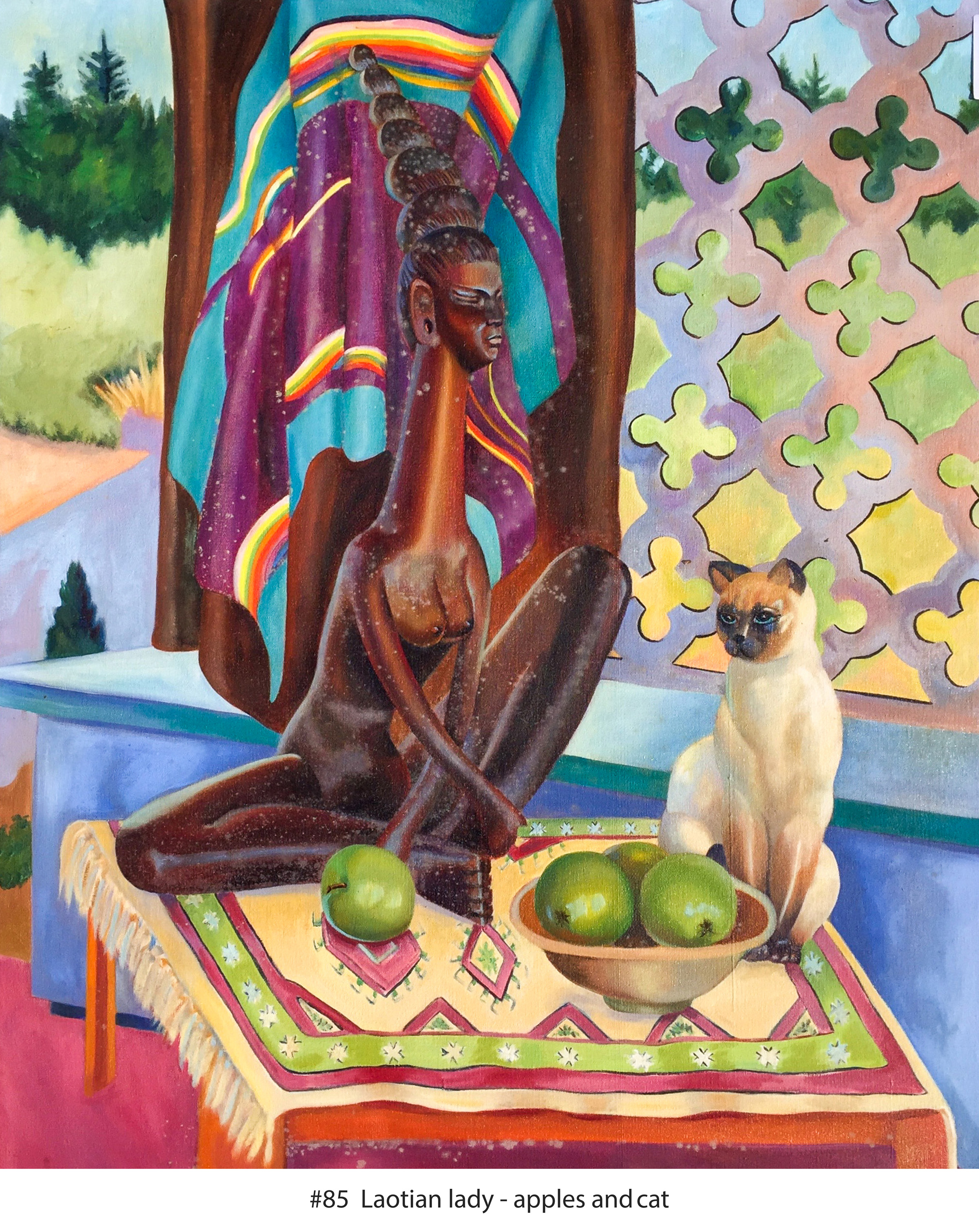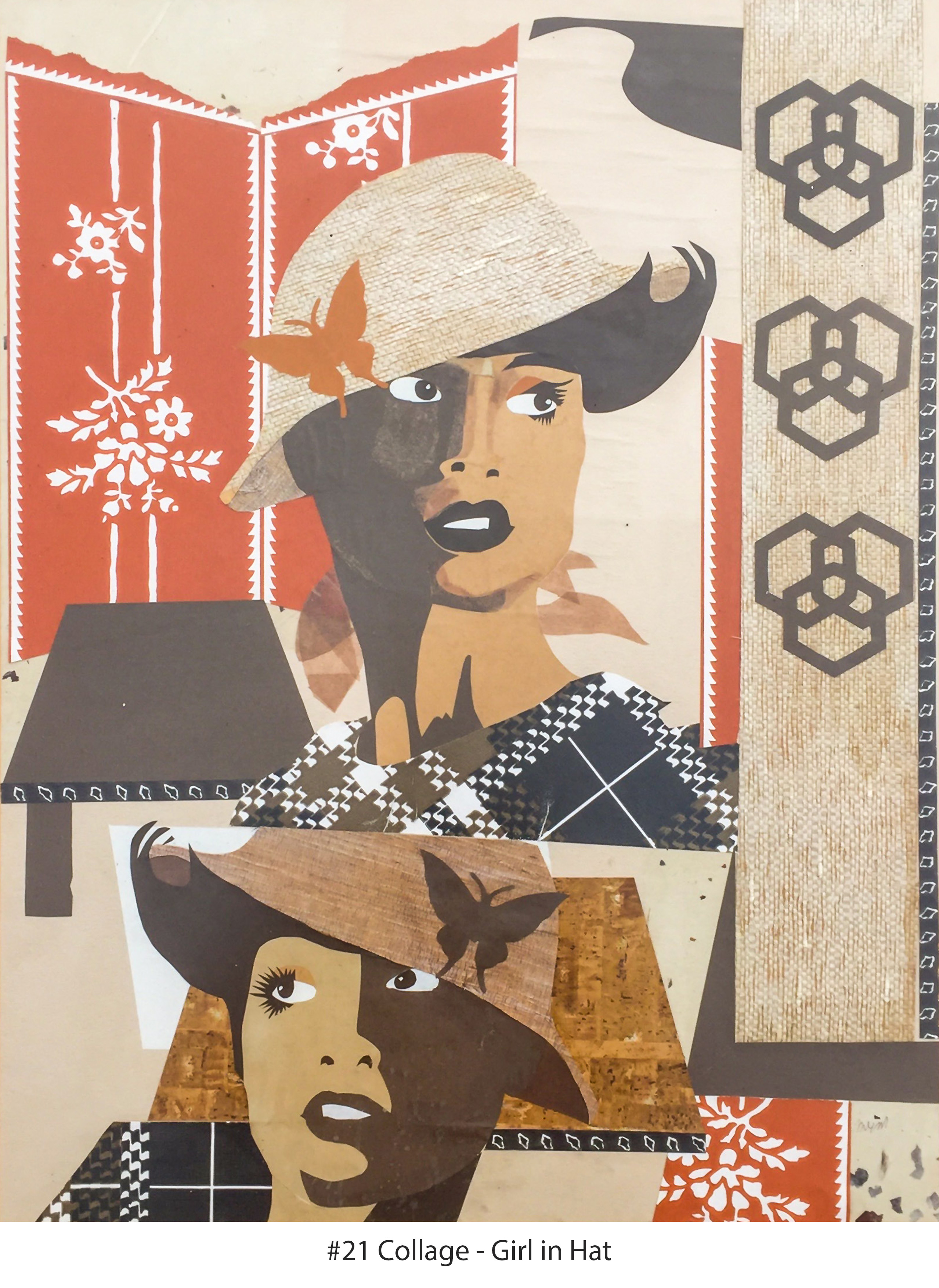Maureen G Marshall
artist – painter – mixed media
Maureen Greta Stevenson Marshall (AA, BA, MA, FRSA)
Born in England in 1921, Maureen was transported from a large country home at the age of three to a three-room shack on her father’s homestead in the wilds of British Columbia. She commenced her formal education at the age of seven, when her family gave up the homestead and moved closer to an area of civilization that boasted a one-room school three miles away. Eventually she attended North and West Vancouver schools, where her interest in art and painting was stimulated. After serving in the Canadian Army as an officer during World War ll, she married, moved to California and raised a daughter.
Maureen received an Associate of Arts degree with honors at Diablo Valley College, a Bachelor of Arts in Art and Anthropology summa cum laude, Phi Beta Kappa at the University of California at Berkeley in 1969, and a Master of Arts in 1970. She is a Fellow of the Royal Society of Artists.
Maureen has studied with many notable artists, including Martin Snipper, Boyd Allen, John Haley, Jerrold Ballaine, Felix Ruvolo, James McRae, Elmer Bischoff, Robert Hartman and Arnaldo Pomodoro of Italy.
Exhibitions of Maureen’s art have been mounted in London, Paris, Berkeley, San Francisco, Vancouver and Nanaimo. Her works are in private collections in England, Sweden, Canada, Egypt, Spain, Mexico and the United States.
Maureen was President of the San Francisco Women Artists and has been listed in Who’s Who in the West 1977-1989, The World of Who’s Who of Women 1982-1985, The Dictionary of International Biography 1982, Who’s Who in the World 1989 –1990 and the California Art Review 1989 –1990.


Translations in Paper
Maureen G. Marshall translates known and unknown images using simple media. The images, although often recognizable, leave the viewer with an entirely different emotion, a different perception of the subject. These translations both reduce the image and enlarge the image at the same time.
Collage is one of the oldest and most simple methods for picture making. From childhood, almost everyone has made a collage at some time. Think back to cutting and pasting “snowflakes” or a valentine heart. Collage can be simple or extremely complex. When achieved through the use of three dimensional components, it is referred to assemblage.
Maureen’s collages, which are delicate and intricate beyond belief, are always centered on the human form. They are composed of many layers of diverse types of paper superimposed on one another. You will recognize wrapping paper, newspaper, wallpaper, delicate handmade papers from Italy, England, Japan, Switzerland, the United States and Canada.
The handmade papers from Japan containing silk or cotton fibres are torn to achieve a line drawing effect. There is no drawn line or painted image in Maureen’s collages. The “painting” is arrived at by cutting or tearing paper and gluing it to the support or background material. Papers are exposed to sunlight for at least three months to establish the fade probabilities. This together with fadeless art papers, places Maureen’s collages in the same category as watercolours which are permanent but should be protected from direct sunlight.
Maureen has carried the collage medium far beyond its known application today anywhere in the world and has created a milestone in this art form. Her work is an outstanding example of the contention that “the whole is greater than the sum of its parts”.
Portfolio
The works of Maureen G Marshall





























